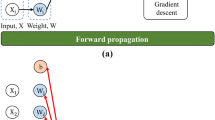Abstract
In this study, an adaptive optimization method based on artificial neural network model is proposed to optimize the injection molding process. The optimization process aims at minimizing the warpage of the injection molding parts in which process parameters are design variables. Moldflow Plastic Insight software is used to analyze the warpage of the injection molding parts. The mold temperature, melt temperature, injection time, packing pressure, packing time, and cooling time are regarded as process parameters. A combination of artificial neural network and design of experiment (DOE) method is used to build an approximate function relationship between warpage and the process parameters, replacing the expensive simulation analysis in the optimization iterations. The adaptive process is implemented by expected improvement which is an infilling sampling criterion. Although the DOE size is small, this criterion can balance local and global search and tend to the global optimal solution. As examples, a cellular phone cover and a scanner are investigated. The results show that the proposed adaptive optimization method can effectively reduce the warpage of the injection molding parts.










Similar content being viewed by others
References
Shen CY, Wang LX, Li Q (2007) Optimization of injection molding process parameters using combination of artificial neural network and genetic algorithm method. J Mater Process Technol 138(2–3):412–418
Kabanemi KK, Vaillancourt H, Wang H, Salloum G (1998) Residual stresses, shrinkage, and warpage of complex injection molded products: numerical simulation and experimental validation. Polym Eng Sci 38(1):21–37
Hiroyuki K, Kiyohito K (1996) Warpage anisotropy, and part thickness. Polym Eng Sci 36(10):1326–1335
Fan B, Kazmer DO, Bushko WC, Theriault RP, Poslinski A (2003) Warpage prediction of optical media. J Polym Sci Part B: Polym Phys 41(9):859–872
Akay M, Ozden S, Tansey T (1996) Prediction of process-induced warpage in injection molded thermoplastics. Polym Eng Sci 36(13):1839–1846
Hiroyuki K, Kiyohito K (1996) The relation between thickness and warpage in a disk injection molded from fiber reinforced PA66. Polym Eng Sci 36(10):1317–1325
Fahy EJ (1998) Modeling warpage in reinforced polymer disks. Polym Eng Sci 38(7):1072–1084
Santhanam N, Chiang HH, Himasekhar K, Tuschak P, Wang KK (1991) Postmolding and load-induced deformation analysis of plastic parts in the injection molding process. Adv Polym Technol 11(2):77–89
Yuanxian GU, Haimei LI, Changyo S (2001) Numerical simulation of thermally induced stress and warpage in injection-molded thermoplastics. Adv Polym Technol 20(1):14–21
Lee BH, Kim BH (1995) Optimization of part wall thicknesses to reduce warpage of injection-molded parts based on the modified complex method. Polym Plast Technol Eng 34(5):793–811
Sahu R, Yao DG, Kim B (1997) Optimal mold design methodology to minimize warpage in injection molded parts. Technical papers of the 55th SPE ANTEC Annual Technical Conference, Toronto, Canada, April/May 1997, vol 3, pp 3308–3312
Tang SH, Tan YJ, Sapuan SM, Sulaiman S, Ismail N, Samin R (2007) The use of Taguchi method in the design of plastic injection mould for reducing warpage. J Mater Process Technol 182(1–3):418–426
Huang MC, Tai CC (2001) The effective factors in the warpage problem of an injection-molded part with a thin shell feature. J Mater Process Technol 110(1):1–9
Liao SJ, Chang DY, Chen HJ, Tsou LS, Ho JR, Yau HT, Hsieh WH, Wang JT, Su YC (2004) Optimal process conditions of shrinkage and warpage of thin-wall parts. Polym Eng Sci 44(5):917–928
Gao YH, Wang XC (2008) An effective warpage optimization method in injection molding based on the Kriging model. Int J Adv Manuf Technol 37(9–10):953–960
Gao YH, Turng LS, Wang XC (2008) Adaptive geometry and process optimization for injection molding using the Kriging surrogate model trained by numerical simulation. Adv Polym Technol 27(1):1–16
Gao YH, Wang XC (2009) Surrogate-based process optimization for reducing warpage in injection molding. J Mater Process Technol 209(3):1302–1309
Kurtaran H, Ozcelik B, Erzurumlu T (2005) Warpage optimization of a bus ceiling lamp base using neural network model and genetic algorithm. J Mater Process Technol 169(10):314–319
Kurtaran H, Erzurumlu T (2006) Efficient warpage optimization of thin shell plastic parts using response surface methodology and genetic algorithm. Int Adv Manuf Technol 27(5–6):468–472
Zhou J, Turng LS, Kramschuster A (2006) Single and multi objective optimization for injection molding using numerical simulation with surrogate models and genetic algorithms. Int Polym Process 21(5):509–520
Jones DR, Schonlau M, Welch WJ (1998) Efficient global optimization of expensive black-box functions. J Glob Optim 13(4):455–492
Sadeghi BHM (2000) A BP-neural network predictor model for plastic injection molding process. J Mater Process Technol 103(3):411–416
Chow TT, Zhang GQ, Lin Z, Song CL (2002) Global optimization of absorption chiller system by genetic algorithm and neural network. Energy Build 34(1):103–109
Cook DF, Ragsdale CT, Major RL (2000) Combining a neural network with a genetic algorithm for process parameter optimization. Eng Appl Artif Intell 13(4):391–396
Ozcelik B, Erzurumlu T (2006) Comparison of the warpage optimization in the plastic injection molding using ANOVA, neural network model and genetic algorithm. J Mater Process Technol 171(3):437–445
Chen WC, Tai PH, Wang MW, Deng WJ, Chen CT (2008) A neural network-based approach for dynamic quality prediction in a plastic injection molding process. Expert Syst Appl 35(3):843–849
Woll SLB, Cooper DJ (1997) Pattern-based closed-loop quality control for the injection molding process. Polym Eng Sci 37(5):801–812
Cheng J, Li QS (2009) A hybrid artificial neural network method with uniform design for structural optimization. Comput Mech 44(1):61–71
Acknowledgments
The authors gratefully acknowledge financial support for this work from the Major program (10590354) of the National Natural Science Foundation of China and wish to thank Moldflow Corporation for making their simulation software available for this study.
Author information
Authors and Affiliations
Corresponding author
Rights and permissions
About this article
Cite this article
Shi, H., Gao, Y. & Wang, X. Optimization of injection molding process parameters using integrated artificial neural network model and expected improvement function method. Int J Adv Manuf Technol 48, 955–962 (2010). https://doi.org/10.1007/s00170-009-2346-7
Received:
Accepted:
Published:
Issue Date:
DOI: https://doi.org/10.1007/s00170-009-2346-7




